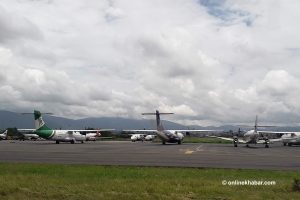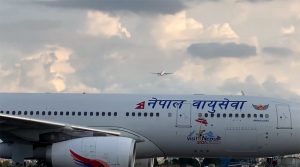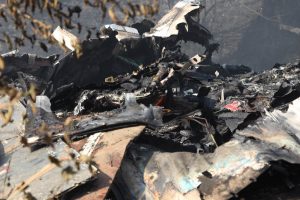
Nepal’s airspace is renowned as one of the most perilous air routes globally. Over its 72-year aviation history, the country has witnessed 107 aeroplane and helicopter crashes. These tragic incidents have claimed the lives of 941 individuals, resulting in an average of nine air passengers losing their lives in each accident.
The data from the Civil Aviation Authority of Nepal illustrates that every year, one or more plane crashes occur, underscoring the precarious state of air travel in Nepal.
But why are these crashes happening? What do the crash incident reports of these crashes suggest? Is it due to the terrain? Or is it due to the aircraft or the pilot?
The reasons behind these crashes are complex and cannot be attributed to a single factor. The explanation is also far from straightforward, but a striking similarity in the patterns observed across these crash incident reports suggests a systemic issue. This raises concerns about the level of commitment Nepal demonstrates towards aviation safety. It also sheds light on why Nepal continues to be on the ICAO’s blacklist.
Crash history
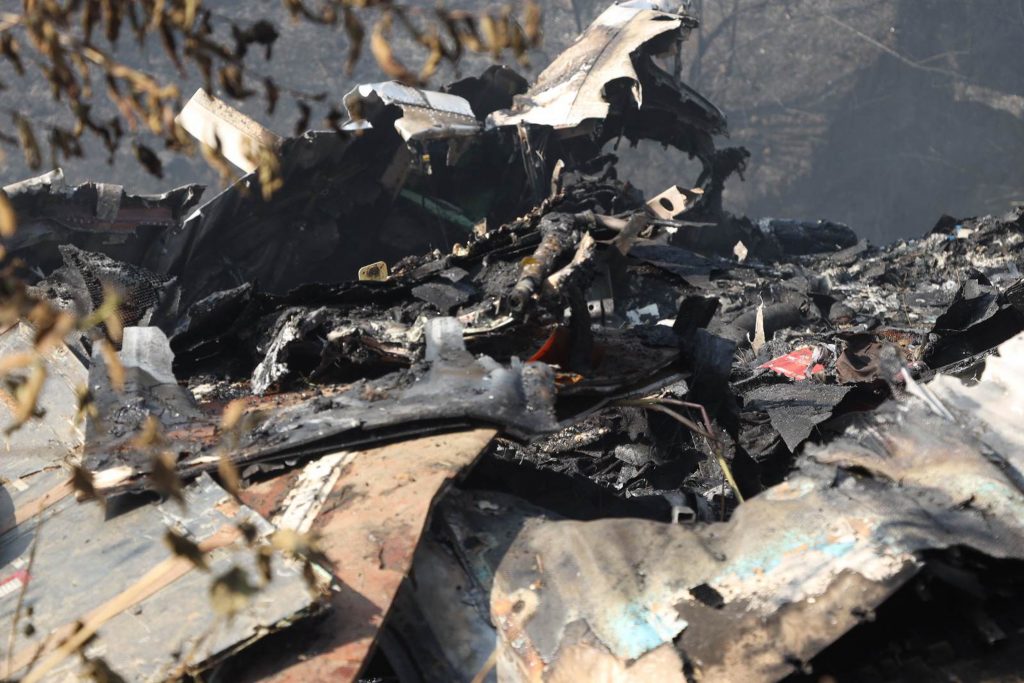
According to CAAN, Nepal’s first air crash took place in 1955 when a Kalinga Air plane crashed in the Simara.
The most significant aviation tragedy in Nepal, however, occurred on September 28, 1992, when a Pakistan Airlines plane crashed in Bhattedanda, Lalitpur, resulting in the tragic loss of 167 lives. Another devastating incident took place on January 15, 2023, when a Yeti Airlines flight tragically crashed in Pokhara, marking one of the deadliest domestic flight accidents in Nepali history, claiming the lives of 72 individuals.
Following the Pokhara accident, a Manang Air helicopter crashed in Lamjura, Solukhumbu in July, resulting in six people losing their lives. On May 29, 2022, a Tara Air plane crashed near Jomsom in Mustang. That prompted the government to form an Aircraft Accident Investigation Commission (AAIC) to probe both the Tara and Yeti accidents, and it has now submitted its conclusive report.
The findings from both crash incident reports indicate that human error was the primary cause of the accidents. This conclusion aligns with similar conclusions made in several other plane and helicopter incidents in Nepal. This pattern not only highlights a potential lack of effectiveness within the commission but also raises concerns about the thoroughness of the investigations.
Same same but different?
In Nepal, where air accidents occur annually, investigation commissions are routinely summoned. However, the resulting crash incident reports frequently yield similar conclusions.
Here is a list of five such conclusions:
- Yeti Airlines 9N-ANC (Pokhara)
The incident took place on January 15, 2023, and the investigation commission has since presented its findings to the government. The report, however, has not yet been disclosed to the public.
In the preliminary air crash report released in February, the commission specified that the plane crashed due to both engine propellers going into the feather position. This condition renders the plane incapable of moving forward, causing it to descend to the ground. The report attributes this incident to pilot error.
- Tara Air 9N-AET (Mustang)
The weather and the negligence of the pilot in the operation of the equipment in the plane are considered to be the main reasons for the accident of Tara Air’s Twin Otter plane which flew from Pokhara to Jomsom on May 31, 2022. The crash incident report notes that the terrain avoidance and warning system, which alerts about mountains ahead of the flying plane and potential risks, was disabled.
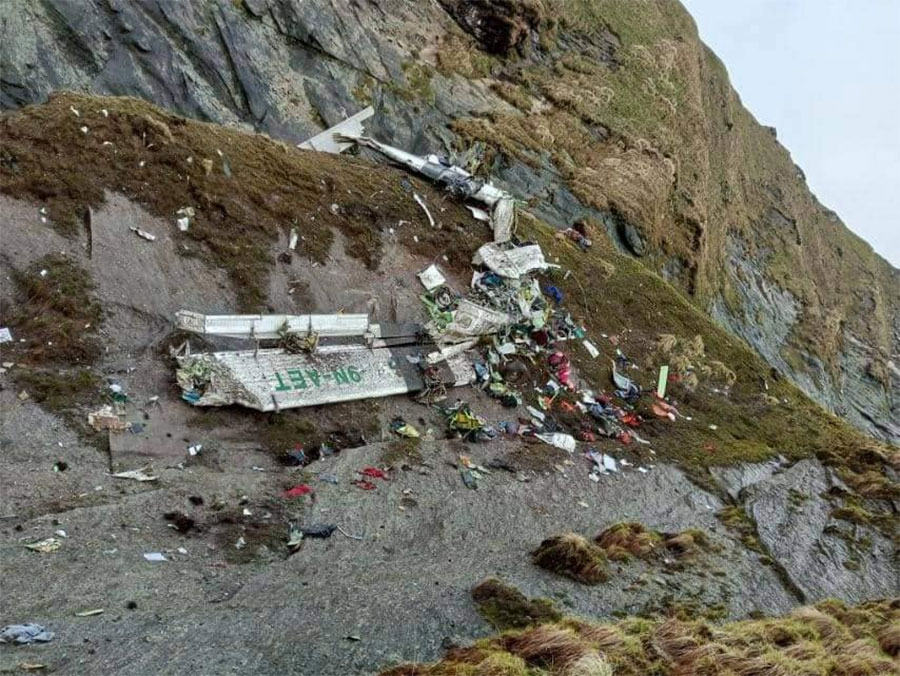
The inquiry commission concluded that the co-pilot who was flying the plane had little experience with the geography of the area and did not use the navigation equipment on the aircraft. It concluded that the accident could not be avoided due to the sudden change of weather and the plane entering the clouds and flying after switching the warning system off.
- Summit Air 9N-AMH (Lukla)
The investigation commission determined that the primary factor contributing to the Summit Air accident in Lukla on April 14, 2019, was the incorrect operation of the power lever, which controls both plane engines. This resulted in the aircraft veering to the right and ultimately crashing before corrective action could be taken by the pilot.

The Lukla runway is notably narrow. The report also highlights that the accident might have been averted if the runway were wider and devoid of steep structures.
- Air Dynasty Helicopter 9N-AMI (Pathibhara)
The crash incident report says weather was the primary reason why the Air Dynasty helicopter crashed in Pathibhara in Taplejung on February 27, 2019. This report also blames the pilot for the crash. It mentions the pilot flew the helicopter despite poor weather and did not talk to nearby towers during the flight.
The report concluded that the pilot violated many rules while flying in bad weather. The investigation commission also raised the issue of weight in this helicopter accident. The then tourism minister Rabindra Adhikari died in this helicopter accident.
- Makalu Air 9N – AJU (Simkot)
In the Makalu Air crash in Simkot, Humla on May 16, 2018, pilot error was also a significant factor. The pilot persisted with the flight despite adverse weather conditions, as stated by the commission. Additionally, the company’s safety management and its failure to provide consistent training to pilots on the aircraft’s connected devices were identified as contributing factors.
Need for humanitarian aspect and unbiased investigation
Aviation expert and ex-pilot Achyut Raj Pahadi says that it is natural that the pilot’s role is mentioned with priority in the crash incident report of the accident investigation commission as a pilot is the commander of the aircraft. However, he argues that many problems will be solved if the reasons behind this situation are investigated and resolved.
“Pilots can get stressed, they can ignore warnings, and they can break the rules, “says Pahadi. ”Why is this situation happening? We need to explore that which has not been done so far.”
Pahadi says pilots are usually remunerated based on the number of hours they fly. So many, want to make extra money, and fly more hours. This, he believes will result in the pilot getting stressed.
“Family obligations and personal habits do not help either,” he says.
In this scenario, even skilled and seasoned pilots can be prone to making mistakes. He emphasises the urgent need for a thorough review to understand why an accident-prone environment is being fostered.
A former director general of the authority calls for a shift away from the practice of solely blaming pilots for accidents, emphasising the need for a more humane perspective. He points out that the commission has yet to consider broader factors, including government policies, company operations, and regulatory oversight.
Despite Air Policy 2020’s goal of establishing an independent accident investigation mechanism in Nepal, the government has not taken action, instead forming ad-hoc commissions led by individuals with potential conflicts of interest. This has raised concerns about the credibility of these investigations.
Another director general argues that without an independent commission, the resulting reports lack impartiality. Furthermore, the inclusion of airline personnel on these commissions hinders a fair review. The appointment of non-aviation experts as coordinators further undermines the quality of investigations.
CAAN’s reluctance to challenge the authority’s decisions, coupled with the limitations of analysing ‘black box’ and ‘cockpit voice recorder’ data abroad, can lead to undue blame on pilots and weather conditions. Moreover, establishing an independent and permanent accident investigation mechanism is imperative to ensure unbiased investigations and enhance aviation safety in Nepal.
Weak investigation a major problem says ICAO

According to the data of the global flight safety monitoring audit conducted by the International Civil Aviation Organization (ICAO) in April last year, Nepal’s compliance rate with the standards issued by the organisation is around 70 per cent, which is above the average compliance rate of the world and Asia and the Pacific region.
However, among its eight aspects, the weakest aspect is accident investigation. Only 21 per cent of eight factors have been followed, which is caused by to government not being able to clean up the regulatory bodies of Nepal.
While Nepal lacks an independent and permanent commission for accident investigation, the regulatory body CAAN itself conducts this service. Consequently, Nepal has been on the European Union’s blacklist since 2013.
International bodies raised a critical question when blacklisting, focusing on the authority’s role. This pertains to the need for a separation between the service provider and the regulatory body by restructuring the authority.
Turning a blind eye to the structural reforms of the authority
ICAO has conducted three audits of Nepal between 2009 and 2022, providing subsequent reports. During this period, ICAO has consistently emphasised the need for structural reforms within the authority.
Presently, the authority handles various aspects, including the regulation of Nepal’s civil aviation, civil aviation air navigation services, airport services, and training. Unfortunately, employees have prioritised service over regulation, seeking personal gain by securing airport contracts and seeking authority positions, which has not received the attention it deserves from every tourism minister.
Even the current Minister of Tourism, Sudan Kirati, does not seem to be paying enough attention to this. Due to this, experts say that the regulatory work is becoming weak when the authority itself regulates the services provided by itself.
This story was translated from the original Nepali version and edited for clarity and length.






